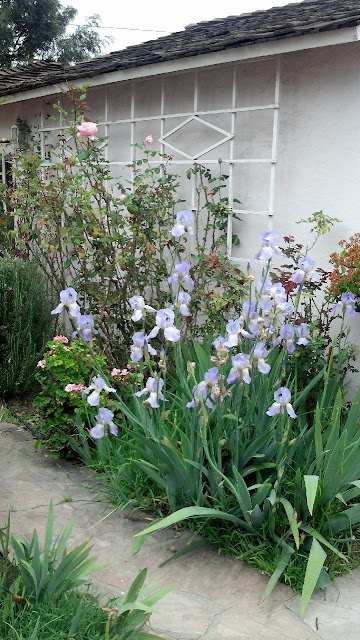
|
These are Debbie Arrington's heirloom blue flag irises.
(Photo: Debbie Arrington)
|
Did your bearded irises stop blooming? They likely need late summer rejuvenation
By dividing, these plants multiply.
Bearded irises rank among the best-flowering perennials for the Sacramento garden. They’re low maintenance, drought tolerant and reliable. They pretty much take care of themselves most of the year, dying back in fall before re-emerging for a massive spring flower show (and sometimes more in fall).
But every three to five years, bearded irises need to be dug up and started over. That’s the key to their durability and consistent bloom.
If a bearded iris in your yard has stopped blooming, it most likely needs to be divided. In the end, you get more plants – and more flowers.
Timing is everything with this chore; irises need to be divided and replanted in late August or September to get ready for winter dormancy. So now is the right time to dig up the iris bed.
Bearded irises grow from rhizomes, fat segmented tubers that grow just under the soil. Over time, the rhizomes lose their vitality. They rot or wither away. Side shoots grow from the central rhizome to form new baby rhizomes. It’s those baby rhizomes that will produce the future blooms.
Each rhizome produces thumblike protrusions with fans of leaves attached. Once a “thumb” produces a flower stalk, it won’t bloom again. So, any segments attached to flower stalks should be discarded, allowing room for the other “thumbs” to grow.
How do you know which to keep, which to cut? Dig up the rhizomes and look.
Shallow-rooted, they come up very easily, pried from the ground with a pitchfork or spade. (Be careful not to whack the rhizome you intend to keep.)
Once they're unearthed, wash off the rhizomes with water and start working them apart, using your fingers and a trowel or sharp knife. Keep the young, healthy rhizomes with one or two fans of leaves and healthy roots attached. Break off the aged, bloomed-out, rotted or dried-out pieces and discard. Also look for insect damage; cut that out, too.
Now, you’re ready to replant. First, rejuvenate the planting area with some well-aged compost and a little bone meal, worked into the top 6 inches of soil. On the irises, trim the leaves down to 4 to 6 inches.
Plant the rhizomes about 12 inches apart so the fan of leaves sits right on the soil surface, with the rhizome just under the soil. Unlike most perennials, don’t cover these with mulch. (That can promote rhizome rot.) Water deeply once, then let rest.
The irises will take over from there.
This method will keep a clump of bearded irises blooming and healthy for generations. I know. With unusually tall and fragrant flowers, this clump of old-fashioned blue flags originally came from my great-grandparents’ farm. Growing in the same spot for 70 years, it gets dug up and replanted every five years or so. And it’s still blooming strong.
A little extra effort two or three times a decade pays off.
Want to learn more about irises? Check out the Sacramento Iris Society:
https://sacramentoirissocietydotcom.wordpress.com/

